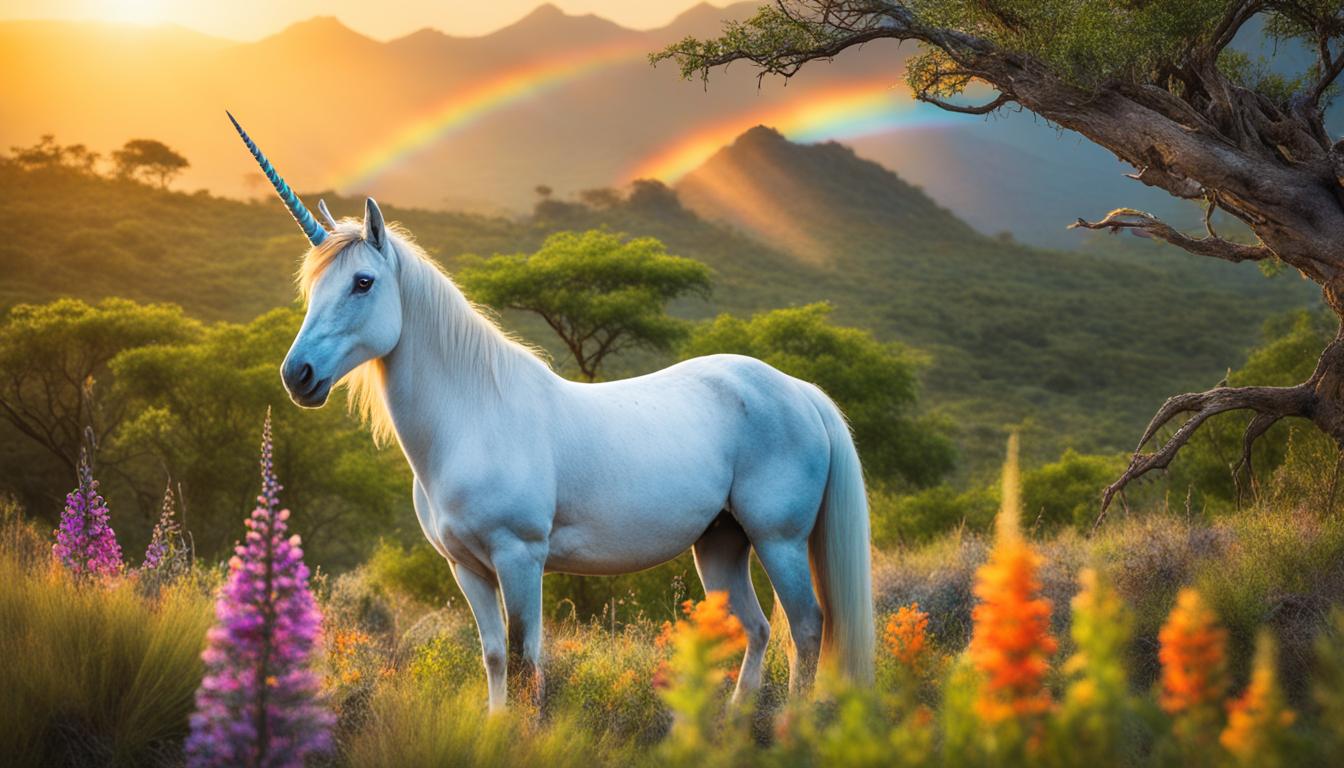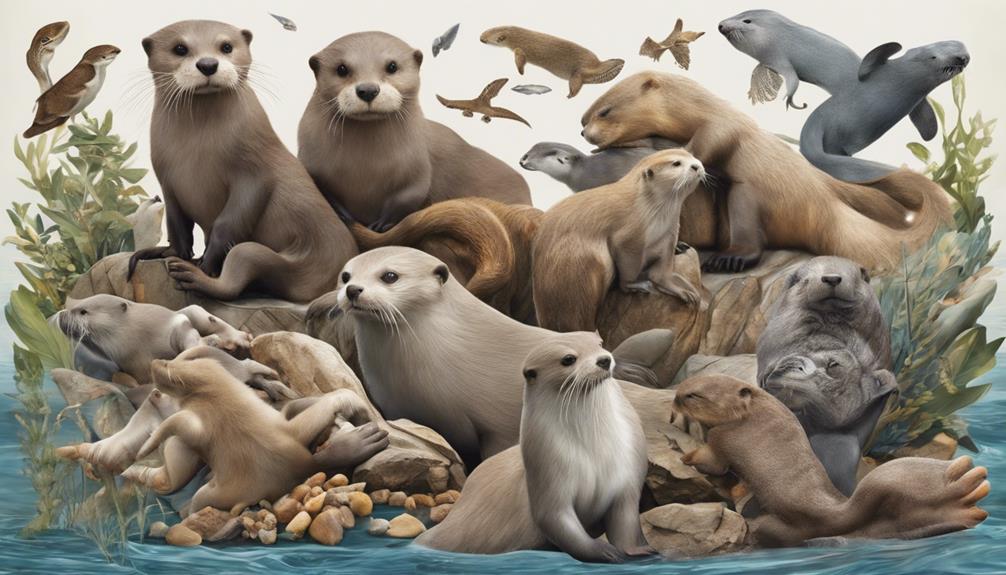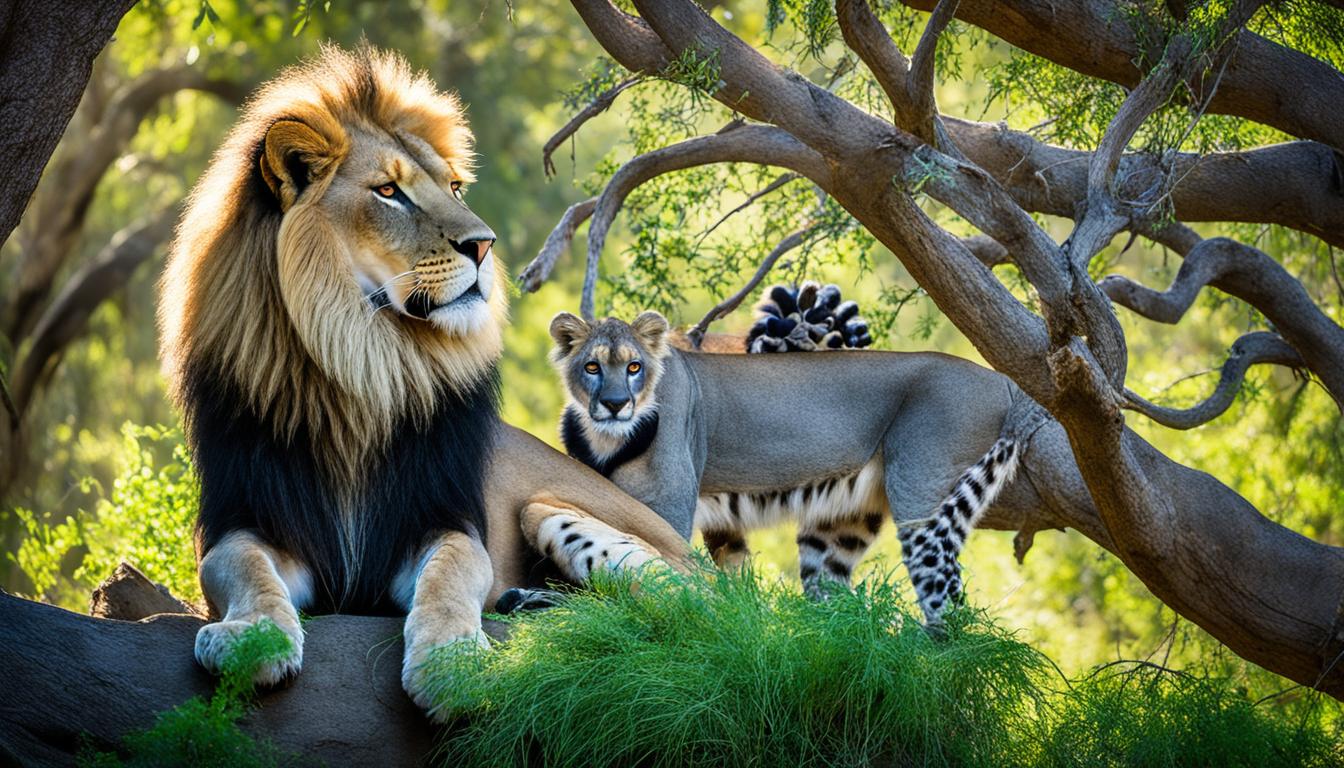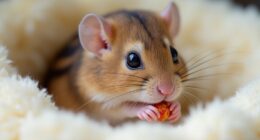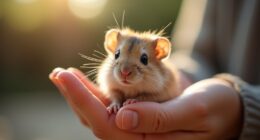Did you know that snakes can be found in every continent on Earth except Antarctica? It’s true! These fascinating reptiles have managed to conquer almost every corner of our planet, adapting to a wide range of environments and evolving unique characteristics over millions of years.
Snakes are truly awe-inspiring creatures that deserve our attention and understanding. In this article, we will delve into the world of snakes, uncovering their diversity, adaptations, behaviors, and much more. So, join us on this journey as we explore the captivating world of snakes!
Key Takeaways
- Snakes can be found in every continent except Antarctica.
- There are over 3,700 snake species worldwide.
- Snakes have been evolving for over 142 million years.
- Some snakes have adapted to live in the sea.
- Snakes play a crucial role in maintaining ecosystem balance.
Snakes: A Diverse Group of Reptiles
Snakes are an incredible and diverse group of reptiles, second only to lizards in terms of species diversity. With over 3,700 known species, snakes can be found on every continent except Antarctica. Their adaptability and evolutionary success are truly remarkable.
Snakes have been around for approximately 100 million years, evolving from prehistoric lizards. This long history has allowed them to develop a wide range of characteristics and behaviors that enable them to thrive in various environments. From the lush rainforests of South America to the arid deserts of Africa, snakes have conquered diverse habitats and proven themselves to be masters of survival.
Australia, in particular, is home to a remarkable array of snake species. With its unique ecosystem and isolated geography, Australia boasts some of the most venomous snakes in the world, such as the inland taipan and the eastern brown snake. These snakes have adapted to their surroundings, showcasing a fascinating array of colors, patterns, and behaviors.
Understanding the diversity of snakes can help us appreciate their integral role in ecosystems worldwide. As predators, they help control populations of rodents and other small animals, maintaining the delicate balance of nature. Through their unique adaptations and evolutionary history, snakes continue to captivate researchers, wildlife enthusiasts, and snake lovers alike.
One of the most diverse groups of reptiles, snakes are an integral part of the natural world. Let’s explore their fascinating characteristics, behaviors, and adaptations in the upcoming sections.
Snake Diversity and Adaptation
Snakes are an incredibly diverse group of reptiles, with approximately 3,000 different species worldwide. These snake species are categorized into 30 different families and numerous subfamilies. This wide array of snakes showcases their remarkable ability to adapt to various environments and habitats.
Snakes can be found across a range of ecosystems, from the depths of the ocean to the heights of mountains, the densest of forests to the vast savannas. No matter the environment, snakes have successfully adapted to survive and thrive.
They have developed physical and behavioral adaptations that allow them to navigate and flourish in their respective habitats. Whether it’s the streamlined bodies and paddle-like tails of sea snakes for efficient swimming or the heat-sensing pits of pit vipers for hunting in the dark, snakes have evolved remarkable features.
These adaptations enable snakes to camouflage themselves, fend off predators, efficiently capture and swallow prey, and regulate their body temperature. Snakes have truly mastered the art of adaptation, allowing them to occupy almost every corner of the Earth.
Snake Adaptations in Action
“Snakes possess an incredible range of adaptations that enable them to conquer even the harshest environments. Their ability to blend into their surroundings and efficiently hunt their prey is truly awe-inspiring.” – Dr. Emma Johnson, Herpetologist
| Snake Species | Habitats | Adaptations |
|---|---|---|
| Green Tree Python | Tropical rainforests | Prehensile tail for climbing trees, vibrant green coloration for camouflage |
| Garter Snake | Grasslands, wetlands | Keen sense of smell for tracking prey, ability to release a musky odor as a defense mechanism |
| Rattlesnake | Deserts | Rattle on the tail for warning predators, ability to blend into sandy environments |
| Boomslang | Savannas | Large eyes for excellent vision, rear-fanged venomous bite |
The Remarkable Adaptability of Snakes
Snakes’ ability to adapt to various habitats and environments not only allows them to survive but also plays a crucial role in maintaining the balance of their ecosystems. These versatile creatures serve as both predator and prey, ensuring the overall health and biodiversity of their respective habitats.
From the agile climbers of the rainforests to the stealthy hunters of the desert, snakes have proven time and again that they are masters of adaptation. Understanding the diversity and adaptability of snakes opens up a world of fascinating possibilities and allows us to appreciate the wonders of nature.
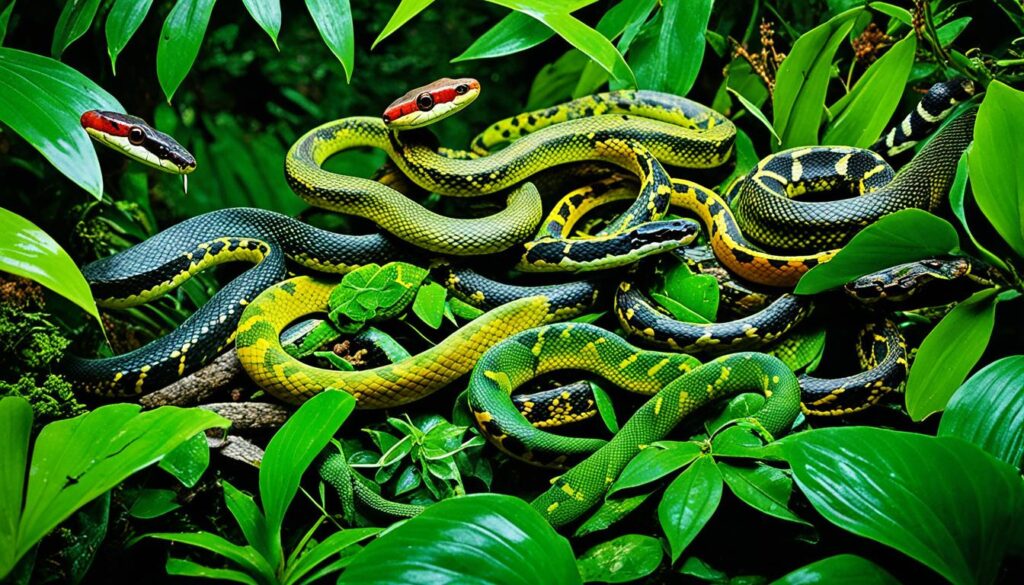
Evolution and Age of Snakes
Snakes have a long history that dates back to the Cretaceous period. Fossil records show that snakes first appeared around 98 to 142 million years ago, making them relatively young compared to other reptiles such as crocodiles, lizards, and turtles.
“Snakes have evolved and adapted over millions of years to become the fascinating creatures we see today. Their journey through time is a testament to their survival and success in various environments.”
Snakes underwent significant evolutionary changes during their existence, leading to their unique characteristics and adaptations. Their development showcases the wonders of natural selection, enabling them to thrive and diversify across different habitats.
Let’s take a closer look at the evolution of snakes and delve into the age-old secrets they carry within.
Did you know that snakes share a common ancestor with lizards? Over time, some lizards began to acquire adaptations that allowed them to live and hunt in narrow spaces, leading to the evolution of snakes. This transformation involved changes in their body structure, such as the elongation of their bodies and the loss of their limbs.
The evolution of snakes continued as they adapted to different environments and ecological niches. They developed specialized characteristics to suit their lifestyles, whether burrowing in the ground, climbing trees, or swimming in the water.
Sea snakes, for example, have evolved to thrive in marine environments, fully adapted for a life beneath the waves. Their flattened tails and ability to hold their breath for extended periods enable them to maneuver through the water with ease.
To illustrate the evolutionary journey of snakes, here’s a timeline highlighting key milestones:
| Period | Years ago | Snake Evolutionary Milestone |
|---|---|---|
| Jurassic Period | 201-145 million years ago | Earliest known snake fossils appear |
| Cretaceous Period | 145-66 million years ago | Snakes diversify and adapt to various ecological niches |
| Present | – | Existing snake species continue to evolve and thrive |
As we can see, snakes have continuously evolved and adapted alongside other living organisms, shaping their biology and behavior over millions of years.
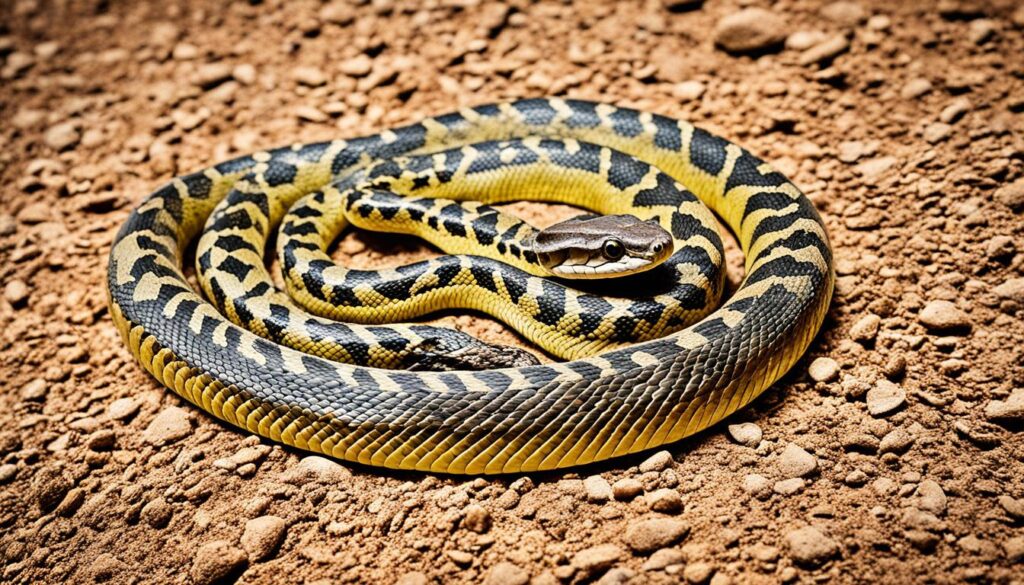
Diving into the past and witnessing the remarkable journey of snake evolution allows us to appreciate their resilience and the wonders of the natural world. Let’s explore further and uncover more secrets that snakes hold.
Unique Adaptations of Sea Snakes
Sea snakes are a fascinating group of reptiles that have undergone incredible adaptations for life in the ocean. With approximately 70 different species, these snakes have fully embraced aquatic life, providing unique insights into the wonders of marine ecosystems.
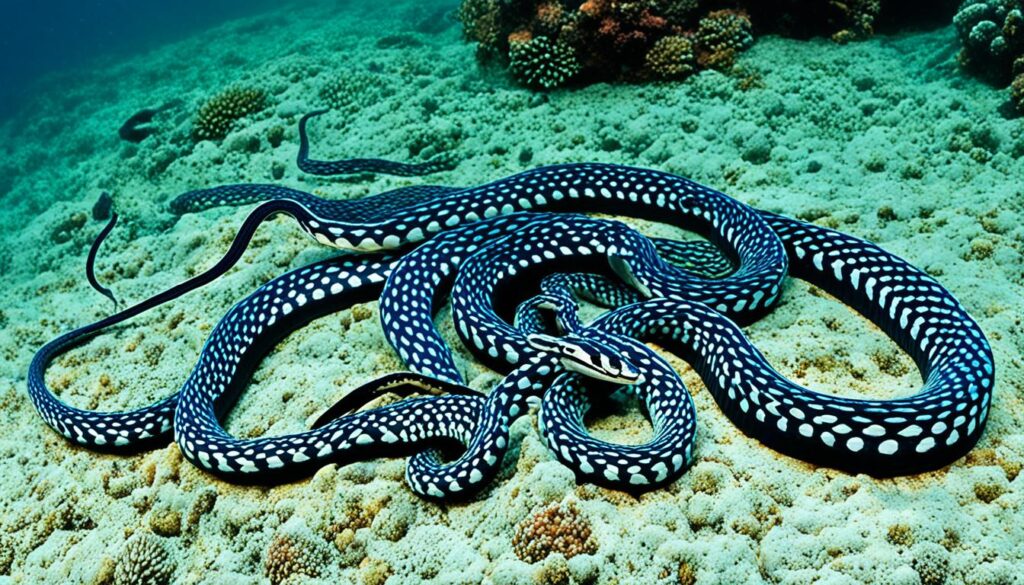
Sea snakes are highly specialized for their underwater habitat. Unlike their terrestrial relatives, sea snakes cannot move on land, except for the sea kraits. Their bodies are streamlined, allowing them to navigate through the water with ease. Their tails are paddle-like, acting as efficient propellers as they swim.
One of the most remarkable adaptations of sea snakes is their ability to breathe while submerged. Unlike most reptiles, they can extract oxygen from the water through their skin. This enables them to stay underwater for extended periods, hunting prey and avoiding potential predators.
Sea snakes also possess a unique venomous bite, which they use to immobilize their prey. While their venom is potent, sea snakes are not aggressive towards humans and only bite when threatened. However, it’s always important to exercise caution and maintain a safe distance.
“The adaptations of sea snakes provide us with valuable insights into the world of aquatic life and the delicate balance of marine ecosystems.”
Aquatic Adaptations of Sea Snakes:
| Adaptation | Description |
|---|---|
| Streamlined Body | Allows efficient movement through water. |
| Paddle-like Tail | Aids in propulsion and steering while swimming. |
| Ability to Extract Oxygen from Water | Enables extended underwater stays. |
| Venomous Bite | Aids in capturing and immobilizing prey. |
Sea snakes’ unique adaptations make them crucial members of marine ecosystems. They help control populations of small fish, maintaining balance and preserving the health of coral reefs and other underwater habitats.
Through their remarkable abilities and adaptations, sea snakes remind us of the incredible diversity and resilience of life in our oceans.
Snake Characteristics and Behaviors
Snakes possess unique characteristics and exhibit fascinating behaviors that make them intriguing creatures in the animal kingdom. Let’s explore some of the key traits and behaviors that define these remarkable reptiles.
1. Ectothermic Nature:
Unlike mammals and birds, snakes are ectothermic, meaning their body temperature depends on the external environment. They rely on external heat sources such as the sun to regulate their body temperature. This adaptation allows them to conserve energy and thrive in a range of environments.
2. Sense of Smell:
Snakes have a remarkable sense of smell and use their tongues to pick up scent molecules from the environment. Their unique Jacobson’s organ, located in the roof of their mouth, helps them analyze the scents and navigate their surroundings. This sense of smell is crucial for finding prey, mate selection, and identifying potential threats.
3. Predatory Behavior:
Snakes are skilled predators and play a vital role in maintaining the balance of prey populations in their ecosystems. They possess a wide variety of hunting strategies, from ambush predation to active pursuit, depending on their species and habitat. Some snakes use constriction to subdue their prey, while others rely on venom to immobilize and digest their catch.
“Snakes are fantastic hunters that have evolved impressive strategies to ensure their survival and success in diverse environments.” – Dr. Samantha Herpetologist
4. Solitary Lifestyle:
Snakes are primarily solitary creatures and do not exhibit strong social behaviors. They prefer to live and hunt alone, although some species may gather during the mating season or hibernate together in large numbers. Their solitary nature allows them to maximize their chances of survival and reduce competition for resources.
5. Territorial Instincts:
While snakes are generally solitary, they may establish territories to ensure a steady supply of food and suitable habitats. However, their territorial instincts are not as pronounced as those seen in other animal species. They are more focused on finding suitable resources rather than defending specific areas.
Now that we have explored some of the fascinating characteristics and behaviors of snakes, let’s proceed to the next section to uncover common myths and misconceptions surrounding these intriguing reptiles.

Snake Myths and Misconceptions
Snakes, despite their intriguing nature, often fall victim to numerous myths and misconceptions in Western cultures. These widespread misconceptions contribute to the negative perception and fear associated with these misunderstood creatures. However, a closer look at the truth behind these myths reveals a different perspective.
“Snakes are aggressive, venomous beasts that pose a danger to humans.”
This prevalent myth stems from fear and misunderstanding. In reality, snakes are not inherently aggressive creatures. They prefer to avoid human interaction and will typically retreat when encountered. Snakes perceive humans as potential threats and act defensively when they feel cornered or threatened. Most snake bites occur when individuals attempt to handle or disturb the snake.
It is important to remember that the vast majority of snake species are non-venomous and pose no significant threat to humans. Venomous snakes, although potentially dangerous, will usually only bite if provoked or provoked. Understanding snake behavior and respecting their space can significantly reduce the risk of encounters and potential harm.
“Snakes are social creatures that form groups or colonies.”
Contrary to popular belief, snakes are mostly solitary animals. They do not form social groups or colonies like certain mammals, birds, or insects. Instead, they lead independent lives, occupying their preferred habitats. The social behavior associated with snakes is largely limited to mating and territorial disputes.
This myth may have emerged from the fact that snakes sometimes hibernate together in large numbers during the winter months. However, these aggregations are motivated by the need for a suitable hibernation site rather than social bonding.
“Venomous snakes are always deadly.”
While it is true that venomous snakes can deliver potentially harmful bites, it is crucial to note that not all snakebite incidents result in fatalities. The severity of a snake bite depends on various factors, including the species of snake, the potency of the venom, the location of the bite, and the medical treatment received.
Immediate medical attention is vital in cases of venomous snake bites, as prompt antivenom administration can significantly increase the chances of survival and minimize long-term impacts. Understanding snake habitats and practicing caution when in their presence can help prevent accidents and minimize the risk of snakebite.

Snake Anatomy and Adaptations
When it comes to snake anatomy, these fascinating creatures have some incredible adaptations that allow them to thrive in diverse environments. Let’s explore the unique features and abilities that make snakes so remarkable.
1. Flexible Backbone and Scales
Snakes have a flexible backbone made up of numerous vertebrae and ribs, allowing them to move with incredible agility. This flexibility enables snakes to slither through tight spaces and coil around their prey during hunting. Additionally, their scales, which are made of keratin, provide protection and reduce friction against the surfaces they encounter.
2. Eye-catching Eyes and Eyelids
Unlike most animals, snakes do not have eyelids. Instead, a transparent scale called a spectacle covers and protects their eyes. This unique adaptation allows snakes to maintain their ability to perceive their surroundings even while sleeping, as they do not need to close their eyes.
3. Shedding Skin
One of the most fascinating aspects of snake anatomy is their ability to shed their skin. Snakes regularly shed their old skin to accommodate their growth and remove parasites. During this process, known as molting, a new layer of skin forms underneath the old one, and the snake sloughs off the old skin in one piece. This shedding can occur several times a year, depending on the snake’s age and growth rate.
4. Amazing Adaptations
Snakes have evolved many adaptations that allow them to survive and thrive in their respective habitats. Some species have developed specialized characteristics, such as:
- Venomous fangs for subduing prey (e.g., venomous snakes)
- Heat-sensitive pits to detect warm-blooded prey (e.g., pit vipers)
- Camouflaged patterns and colors for blending in with their surroundings (e.g., green tree python)
- Powerful constriction to immobilize and subdue prey (e.g., pythons)
- Adapted lungs and physiology for life in water (e.g., sea snakes)
These adaptations highlight the incredible diversity and evolutionary success of snakes in various ecosystems.
| Adaptation | Example |
|---|---|
| Venomous Fangs | 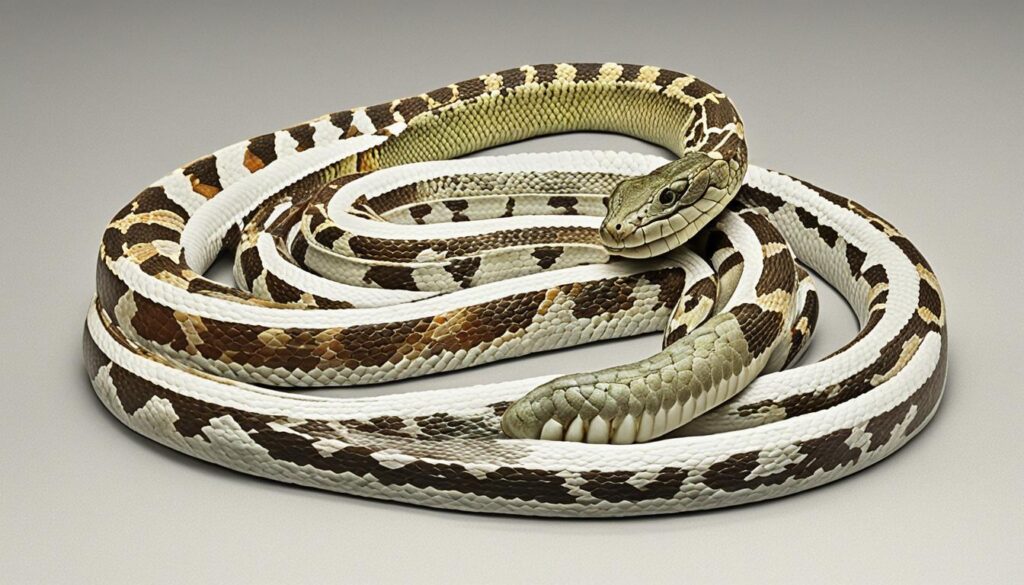 |
| Heat-sensitive Pits | |
| Camouflaged Patterns and Colors | |
| Powerful Constriction | |
| Adapted Lungs and Physiology |
As we delve deeper into the world of snakes, their remarkable adaptations continue to astound us. These incredible creatures have evolved over millions of years to thrive in their diverse habitats, showcasing the wonders of nature’s diversity and adaptability.
Snake Locomotion and Movement
Snakes have fascinating ways of getting around. Their unique forms of locomotion allow them to navigate a wide range of environments with ease.
One common method of snake movement is lateral undulation. This is the typical “slithering” motion that most people associate with snakes. To achieve this, snakes push against rough surfaces, such as rocks or vegetation, with their scales and use their body muscles to propel themselves forward.
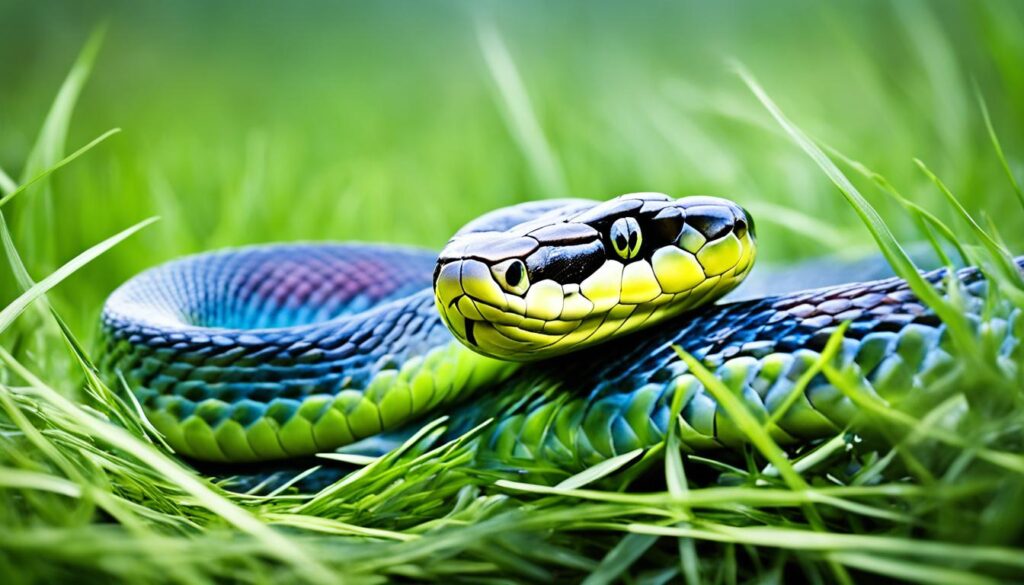
Another type of locomotion is concertina. Snakes use this method when navigating through narrow spaces or climbing trees. In concertina movement, the snake alternates between gripping the surface and pulling itself forward, creating a distinctive accordion-like motion.
Interestingly, some snakes have developed a technique called slide pushing that enables them to move efficiently on smooth surfaces like sand or ice. By extending their ribs and increasing their contact with the ground, snakes can slide forward without slipping.
Constriction is a unique movement employed by certain snake species, such as pythons. Using their powerful muscles, these snakes coil around their prey and squeeze, exerting immense pressure and ultimately causing suffocation.
“Snakes exhibit a remarkable range of movement strategies, allowing them to adapt to various habitats and capture their prey effectively.”
Snake Senses and Communication
Snakes possess remarkable senses that enable them to navigate and communicate in their environments. These unique abilities contribute to their survival and interaction with other snakes.
Firstly, snakes have an exceptional sense of smell and taste. They rely on their forked tongue and Jacobson’s organ to detect scents in the air and on the ground. By flicking their tongues and transferring scent particles to their organ, snakes can analyze their surroundings and identify potential prey, predators, or mates.
In addition to their keen sense of smell, snakes are highly attuned to movement. Their eyesight may not be as sharp as that of other animals, but they compensate by being incredibly responsive to even the slightest motion. This acute sensitivity to movement aids in hunting and detecting potential threats.
However, one of the most fascinating aspects of snake communication is their use of scent trails. Snakes leave behind traces of odor through their skin, scales, and vent. Other snakes can then detect and decipher these scent signals to convey information, such as territorial boundaries or the presence of a potential mate. This olfactory form of communication is vital for social interactions among snakes.
“Snakes rely on their keen sense of smell and their ability to detect movement to navigate and communicate in their environments. Through scent trails, they convey important information to other snakes.”
Understanding snake senses and communication provides valuable insights into their behavior and interactions. These abilities contribute greatly to their survival and adaptation in diverse habitats.
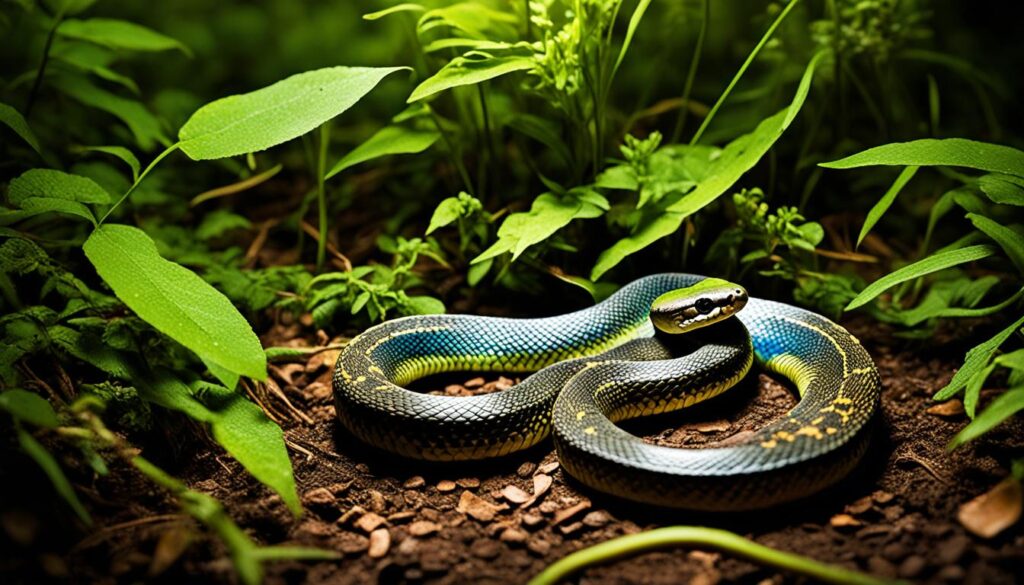
| Snake Senses | Snake Communication |
|---|---|
| Keen sense of smell and taste | Communication through scent trails |
| Responsive to movement | |
Snake Diet and Feeding Habits
Snakes have a carnivorous diet, preying on small mammals, birds, lizards, and frogs. Their feeding habits vary depending on the species and their hunting strategies. Let’s explore how snakes capture and consume their prey.
Snakes are fascinating predators with unique feeding adaptations. They employ different techniques to catch their prey, ensuring a successful meal. Some snakes are ambush predators, patiently waiting for their unsuspecting prey to come within striking distance. Others, like the venomous snakes, have specialized fangs and venom glands that aid in capturing and subduing their victims.
One remarkable characteristic of snakes is their ability to swallow their prey whole. They have extremely flexible jaws that allow them to stretch their mouths and consume animals much larger than themselves. This remarkable feat is made possible by the dislocated nature of their jaws, which enables them to manipulate their prey into their mouths.
It is important to highlight the feeding habits of venomous snakes. These snakes inject venom into their prey, immobilizing them and aiding in digestion. The venom contains enzymes that break down the prey’s tissues, making it easier for the snake to consume and digest its meal.
The Snake Feeding Process
Let’s take a closer look at the typical steps involved in a snake’s feeding process:
- Capture: Snakes use a variety of techniques to capture their prey, including ambush, pursuit, and constricting.
- Subdue: Venomous snakes inject venom into their prey to immobilize them, while other snakes, like constrictors, use their bodies to squeeze and suffocate their victims.
- Ingestion: Once the prey is subdued, the snake begins the process of swallowing its meal. The snake’s flexible jaws and stretchy ligaments allow it to consume prey much larger than its head.
- Digestion: Snakes have unique digestive systems that enable them to break down the proteins, fats, and bones of their prey. Their stomachs produce powerful acids that aid in the digestion process.
- Regurgitation: In some cases, snakes may regurgitate their meal if it becomes too large or if they feel threatened. This allows them to escape potential dangers or to try capturing a different, more manageable prey.
Understanding the snake diet and feeding habits provides insight into these fascinating creatures’ ecological roles and predatory strategies.
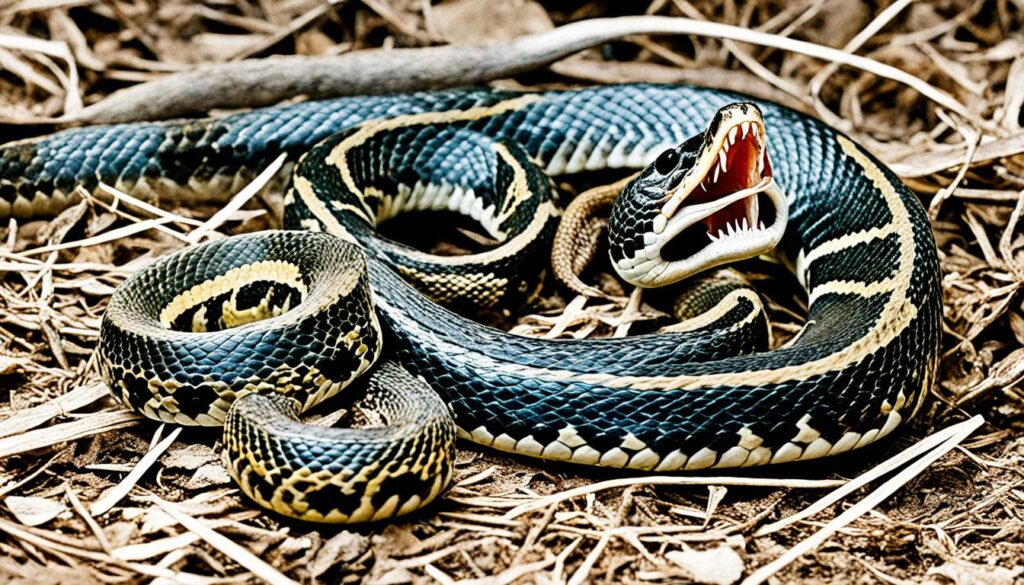
Venomous and Non-venomous Snakes
Snakes come in a wide variety of species, each with its own unique characteristics. One important distinction among snakes is the presence or absence of venom. Venomous snakes possess specialized glands that produce venom, which they use as a defense mechanism and to immobilize their prey. On the other hand, non-venomous snakes rely on different hunting techniques, such as constriction, to subdue their prey.
There are over 700 known venomous snake species worldwide, distributed across various regions and habitats. One of the regions known for its diverse venomous snake population is Australia. In Australia, venomous snakes like tiger snakes, dugites, bardicks, and crowned snakes pose a potential threat to humans and other animals.
“The venomous species found in Australia, such as tiger snakes, dugites, bardicks, and crowned snakes, are highly adaptable to their environments and play important roles in the ecosystem,” said Dr. Sarah Peterson, a herpetologist specializing in Australian reptiles. “It is essential to respect their space and take necessary precautions when encountering them in the wild.”
On the other hand, non-venomous snakes, like pythons, rely on their powerful coils to constrict their prey, restricting blood flow and ultimately leading to its demise. These constrictor snakes have incredible strength and can be found in various regions worldwide.
Understanding the differences between venomous and non-venomous snakes is crucial for personal safety and conservation efforts. It is important to remember that most snake encounters are harmless, and snakes play an important role in maintaining the balance of ecosystems.

Comparing Venomous and Non-venomous Snakes
| Category | Venomous Snakes | Non-venomous Snakes |
|---|---|---|
| Defense mechanism | Use venom to deter threats | Rely on size, camouflage, and behavior as defense |
| Method of prey subduing | Inject venom to immobilize and digest prey | Constrict prey to restrict blood flow and cause asphyxiation |
| Habitat | Found in various habitats, including forests, deserts, and wetlands | Adapted to diverse habitats, from rainforests to grasslands |
| Geographical distribution | Can be found in different regions across the globe | Present in various regions, excluding Antarctica |
Snakes in Human Environments
Snakes, fascinating creatures that they are, can sometimes find their way into human habitats. However, it’s important to note that snakes prefer to avoid contact with humans whenever possible. While the encounter might startle us, it’s crucial to react calmly and remember that these creatures are simply navigating their environment.
Proper education and understanding are key in coexisting harmoniously with snakes. Learning about their behavior, habits, and habitats can help us mitigate potential conflicts and promote peaceful cohabitation.
“Education is the most powerful weapon which you can use to change the world.” – Nelson Mandela
By fostering a deeper understanding of snakes and dispelling common misconceptions, we can create a safer and more respectful environment for both humans and these remarkable reptiles. Snakes are an integral part of the natural ecosystem and play essential roles in pest control by keeping rodent populations in check.
While it’s not advisable to actively encourage snakes to reside in human environments, it’s important to appreciate their role and peacefully coexist. However, in certain circumstances, such as with python species, they can make intriguing pets for those with the necessary knowledge, experience, and commitment to their well-being.
Tips for Coexisting with Snakes in Human Environments
| Tips | Description |
|---|---|
| 1 | Learn about local snake species and their habitats |
| 2 | Keep yards and gardens well-maintained to discourage snakes from entering |
| 3 | Seal any gaps or cracks in buildings to prevent snake entry |
| 4 | Store firewood and debris away from your home |
| 5 | Teach children about snake safety and how to avoid unnecessary risks |
| 6 | If encountering a snake, maintain a safe distance and contact local wildlife authorities if necessary |
Remember, snakes are an integral part of our ecosystem, and with proper knowledge and respect, we can peacefully coexist with them in our shared environment.

Conclusion
Snakes are truly fascinating creatures that have been able to adapt to a wide range of environments over millions of years. Their presence is essential for maintaining the delicate balance of prey populations in ecosystems around the world. By increasing our understanding and appreciation of snakes, we can learn to coexist harmoniously with these remarkable reptiles.
Throughout history, snakes have been misunderstood and often feared, but it is important to recognize their crucial ecological role. Rather than viewing snakes as threats, we should appreciate them as valuable allies in maintaining the delicate balance of nature. When we respect their habitats and avoid unnecessary conflicts, we can ensure a healthier environment for both snakes and humans.
Let’s take the time to learn about the unique characteristics, behaviors, and adaptations of snakes. By doing so, we can debunk common misconceptions and gain a deeper appreciation for these incredible creatures. Together, we can create a world where snakes are valued and their importance in the natural order of things is acknowledged and celebrated.



